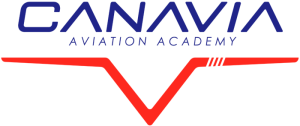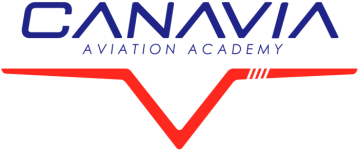FAQ
- Home
- FAQ
Frequently Asked Questions
What certification does Canavia hold?
We are an Approved Training Organisation (E-ATO-172) under European EASA regulations. We receive regular inspections and audits to guarantee the highest standards of safety and quality.
Canavia is the only aviation school in the Canary Islands that teaches all courses, certifications and qualifications related to the world of aviation and approved by the Ministry of Development ( on-site or distance learning).
Would you like to see our certificates and approvals as an aviation school?
What types of aeroplane pilot licences can I obtain, and how do they differ?
- ATPL (A) Airline Transport Pilot Licence: entitles the holder to act as pilot in command of an aircraft weighing more than 5,700kg or more than 9 passenger seats on remunerated flights.
- CPL (A) Commercial Pilot Licence: entitles the holder to act as pilot in command of a single-pilot aeroplane or as co-pilot of a multi-pilot aeroplane on remunerated flights.
- PPL (A) Private Pilot Licence: entitles the holder to act as pilot in command of any aircraft on non-remunerated flights.
- LAPL (A) Light Aircraft Pilot Licence: entitles the holder to act as pilot in command on aircraft with a maximum take-off weight of up to 2,000kg and 4 passengers on non-remunerated flights.
Can I be a student in Canavia if I come from abroad?
Of course. You just need to obtain a study visa.
If you are a non-Spanish citizen and would like to complete your training with Canavia in Spain, we recommend that you ask for information from a study visa advisor, as we do not have the legal capacity to carry out this procedure at the school.
Having said that, the school will provide you with all the necessary information and documents so that the process of obtaining a visa goes smoothly for you.
Professional Pilot training
- What is ATPL?
- About the training
- Cost
- Payment methods
- Are there scholarships for the t
- Can I become a pilot?
- Academic requirements
- Enrolment
- Pilots with PPL
What is ATPL training?
The ATPL or ATP (Airline Transport Pilot Licence) is the licence that will allow you to work as an airline pilot and obtain remuneration working for airlines or private companies, among others. It is the highest level licence and qualifies you to fly aircraft over 5,700kg or with more than 9 passenger seats.
The EASA ATPL licence is the common rule established to guarantee an academic standard at approved training centres in European countries.
Canavia Aviation Academy, as E-ATO-172, is approved by AESA under EASA regulations to teach the necessary training for obtaining an Airline Transport Licence in Spain.
How does the training programme develop?
The Canavia Integrated ATPL course allows students with little to no previous flying experience to obtain a Commercial Pilot Licence (CPL) with a Multi-Engine Instrument Rating (MEP/IR) which is known as the “frozen” ATPL.
A Multi-Crew Cooperation (MCC) course is also included at the end of the training. From this point onwards, pilots can be employed as first officers in an airline, for which they must obtain the type rating of the aircraft they will be flying.
Pilots who have graduated with a “frozen” ATPL may train on any type of aircraft and fly for any airline that accepts their EASA licence. Most airlines will initially assign new First Officers to “short haul” fleets so that they can gain experience in the more demanding departure and approach phases of flight. Once an ATPL holder has accumulated 1,500 hours of experience, the ATPL is “unfrozen” and the holder is eligible for promotion to captain.
How much does the course cost and what does it include?
You can check the prices and details of our different Integrated ATPL courses here.
The course price includes taxes, all theoretical and flight training, all expenses related to flight training (fuel, landing fees, instructor), materials, etc.
It does not include accommodation (optional from €350 per month, more information here), transport from your place of origin or meals.
In order not to incur additional costs, the student must maintain a good progression.
How can I pay for it, are there financing options?
You can make a single payment for the total cost or pay in up to 15 interest-free monthly instalments. In addition, we have an advantageous agreement with BBVA bank so that you can access study loans with very low interest rates.
Currently in Spain, no public organisation offers scholarships for the training of commercial pilots or any other aeronautical position.
However, the Spanish Airline Pilots' Union (SEPLA) has begun to ask for applications so that, in the future, there may be some government aid for studies in the sector.
How do I know if I am eligible for training?
First of all, check if you meet the entry requirements listed on our website. In addition, before enrolling at Canavia, your general aptitude for a career as a pilot will be assessed through a Mathematics and Physics test, as well as an interview in English.
What education is required to access the training, and are languages required?
Aviation regulations do not establish academic requirements or language certificates to access ATPL training, but it is recommended to have completed a Bachillerato and to have a B2 level of English, as you will have to pass our entry test.
How can I enrol?
The first step is to contact us.
This way we can advise you and guide you through the whole registration process.
You can find all the steps of the registration process here.
What if I already have a PPL (A)?
If you hold a Private Pilot Licence, you can join our Integrated ATPL programme, or you can also access modular ATPL training (more information here).
We can validate up to a maximum of 40 flight hours, deducting the proportional part from the cost of your training.
To study your particular case, please contact us.
Medical requirements
What are the medical requirements to become a pilot?
To become a commercial pilot you must hold a Class 1 medical certificate. You must pass a medical examination at an aeronautical medical centre (AMC). You can find a list of accredited aeronautical medical centres in Spain here.
What does the medical examination consist of?
The initial examination is extensive and is carried out by various specialists, including: air medical examiner, cardiologist, ear, nose and throat specialist, ophthalmologist, radiodiagnostic doctor, psychiatrist, clinical analyst and psychologist.
In the first medical examination (required to obtain a licence to fly aircraft), applicants must undergo, in addition to an interview with a specialist and a blood and urine test (which measures the existence of toxins, among other substances), various tests to rule out possible underlying diseases or disorders.
These include, among others, the following
- Cardiological tests (examining the state of the heart, the existence of abnormalities or lesions in the organs and vessels, thromboembolic disorders, etc.).
- Ophthalmological tests (the ability to distinguish colours, visual acuity, visual field, etc.).
- Otorhinolaryngological tests (with the aim, above all, of testing hearing ability) or dermatological tests, among others.
In addition, psychiatric and psychological tests are also carried out to evaluate the existence of personality disorders, psychotic disorders, suicidal ideas, etc. And, ultimately, to analyse the applicant’s mental health.
Are there height requirements?
There are no height limits that affect your ability to obtain a professional pilot’s licence, but if you are particularly short or tall (less than 157 cm or more than 200 cm), we recommend that you find out which aircraft you would fit in and whether you could comfortably reach all the controls. You will then know whether your height might limit your future career prospects.
What if I wear glasses?
The use of glasses, generally speaking, is not a requirement that makes it impossible to qualify for the Class 1 medical certificate and obtain your commercial pilot’s licence or private pilot’s licence.
In cases in which the visual function presents some alteration at the level of refractive errors (myopia, astigmatism, anisometropia, etc.) that makes the use of glasses necessary, each case must be studied individually. It is advisable in these circumstances to consult an AMS-accepted ophthalmologist.
As regards the number of dioptres, the values vary according to the refractive error and the type of assessment carried out (initial or renewal). For example, in the initial assessment it is accepted that the refractive error should be in the order of +5 to -6 dioptres, the refractive error + astigmatism should not exceed 2.0 dioptres and the anisometropia should be less than 2.0 dioptres.
Can I be a pilot if I am colour blind?
Safe colour perception is a mandatory requirement for obtaining the medical certificate entitling the applicant to a commercial airline pilot’s licence. The applicant is required to demonstrate that he/she can easily distinguish the colours necessary to perform the duties of a pilot safely.
In milder cases of colour blindness, if advanced colour tests are passed, the candidate may be qualified as fit by having colour safe vision.
What illnesses can make me unfit to be a pilot?
If you have a specific medical condition, you can consult an aviation medical centre about the feasibility of passing your medical examination. You can also check the medical requirements for EASA licensing here.
After the training
How much does a pilot earn?
There are many variables when it comes to starting your career as a professional pilot but, broadly speaking, it depends very much on the airline you work for, the type of aircraft you fly and the region of the world you fly in.
In the European market, a rough estimate for a pilot initially flying for a small regional airline might be €30,000 a year. A first officer working for one of the larger European airlines could earn between €45,000 and €55,000 a year. Some airlines reimburse the cost of the initial type rating, usually from the first years’ salary.
Experienced captains flying long-haul aircraft can earn up to €150,000 a year. Salaries tend to increase with each year of service with a company.
The average salary for a pilot in Spain is €23,500 per year or €12.05 per hour. Entry-level positions start at an income of €18,000 per year, while more experienced professionals earn up to €32,775 per year.
Do I have any guarantee of getting a job after the training?
We are working towards having active cadet programmes, although we do not currently offer them.
That said, Canavia will try to facilitate job interviews through our network of contacts for those students who have excelled in their training.
What career opportunities are there for a commercial pilot?
Employment opportunities after obtaining the CPL (A) include, among others:
-
Airline pilot
-
Charter pilot
-
Private aircraft pilot
-
Cargo aircraft pilot
-
Media and patrol pilot
-
Agricultural pilot
-
Military pilot
-
Air tour pilot
- Rescue pilot
According to 2022 studies by aviation giant Boeing, it is projected that 602,000 new pilots will be needed to fly and maintain the world’s commercial aviation fleet over the next 20 years.

